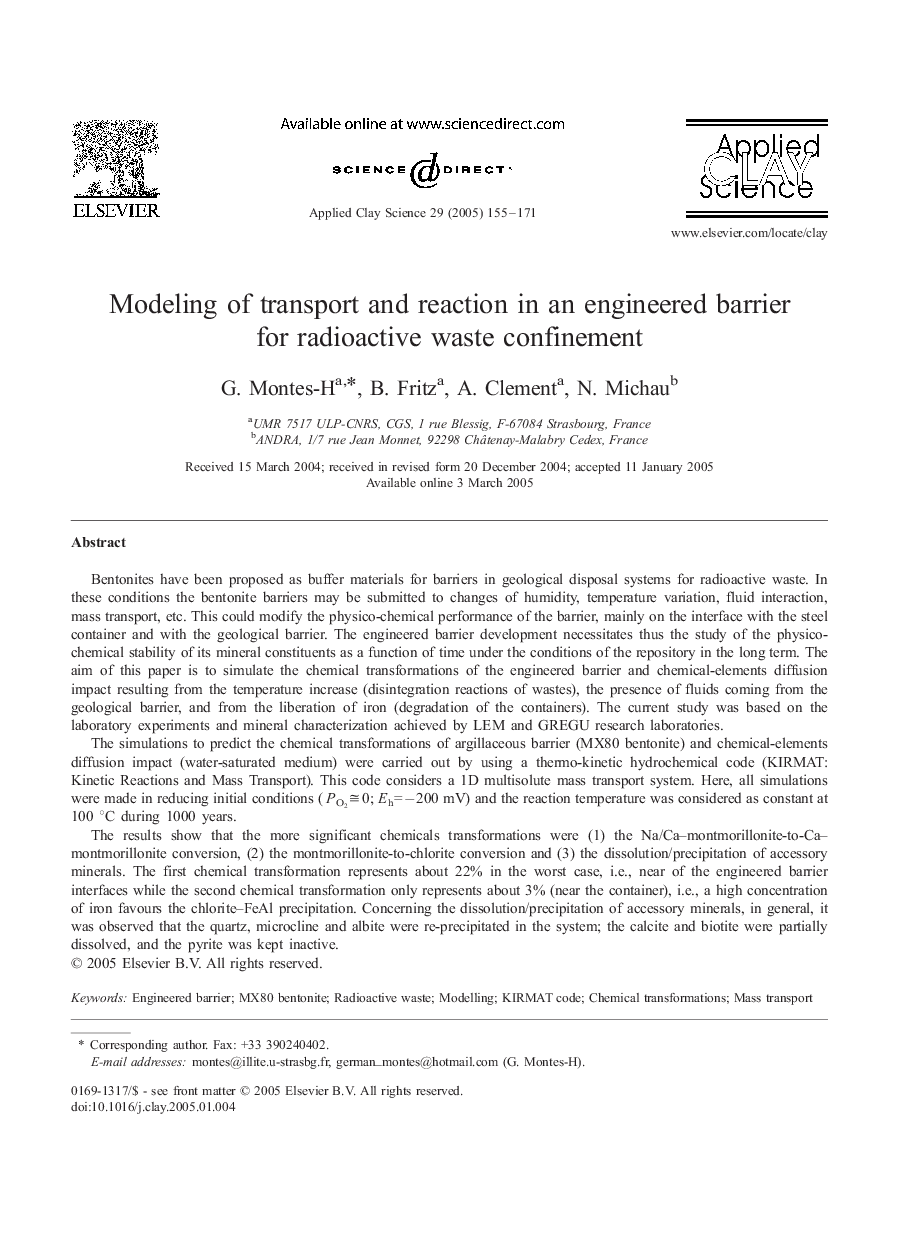| Article ID | Journal | Published Year | Pages | File Type |
|---|---|---|---|---|
| 9822515 | Applied Clay Science | 2005 | 17 Pages |
Abstract
The results show that the more significant chemicals transformations were (1) the Na/Ca-montmorillonite-to-Ca-montmorillonite conversion, (2) the montmorillonite-to-chlorite conversion and (3) the dissolution/precipitation of accessory minerals. The first chemical transformation represents about 22% in the worst case, i.e., near of the engineered barrier interfaces while the second chemical transformation only represents about 3% (near the container), i.e., a high concentration of iron favours the chlorite-FeAl precipitation. Concerning the dissolution/precipitation of accessory minerals, in general, it was observed that the quartz, microcline and albite were re-precipitated in the system; the calcite and biotite were partially dissolved, and the pyrite was kept inactive.
Keywords
Related Topics
Physical Sciences and Engineering
Earth and Planetary Sciences
Geochemistry and Petrology
Authors
G. Montes-H, B. Fritz, A. Clement, N. Michau,
